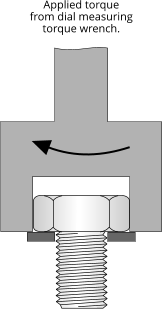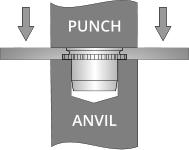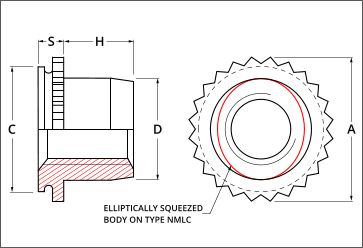


Self-Clinching Fasteners
Broaching Fasteners
Arnold & Shinjo Fasteners
Rivet Bushes
Rivet Nuts
Weld Fasteners
Cage Nuts
Blind Rivets
Inserts for Plastics
Inserts for Stone, Solid
Materials, Composites &
Sandwich Panels
Crown-Nuts
Fast-Con
Installation Equipment
Turned & Cold Formed
special parts made to order
Bespoke fastener design &
development
Fastener & Application
testing
Technical support
ISO 9001
RoHS|WEEE Compliance
REACH Compliance
Conflict minerals
Environmental Policy



SERVICES & SUPPORT







Clinch Nuts
Flush Nuts
Blind Nuts
Miniature Nuts
Nyloc Nuts
Locking Nuts
Floating Nuts
Flush Head Studs
Flush Head Studs for
Stainless Steel
Reduced Flush Head Studs
Thin Panel Non-Flush Studs
High Strength Studs
Thin Panel High Strength
Studs
Flush Head Pins
Flush Head Tapered Pins
Concealed Head Studs
Through & Blind Standoffs
Grounding Standoffs
Thin Panel Standoffs
Quick Release Standoffs
Keylock Standoffs
Concealed Head Standoffs
Flush Panel Screw Assembly
Panel Fasteners
Phillips Head Panel Fasteners
Low-Profile Panel Fasteners
Plunger Assembly
Self-Clinching fastener
Do’s and Don’ts
Self-Clinching fastener
problem solving guides
Self-Clinch in harder panels



NORTHERN PRECISION LIMITED
Specialist Fasteners
+44 (0) 1302 836010
sales@npfasteners.com




Contact us
You can contact us using any
of the methods below.
Unit 3 Durham Lane
Armthorpe
Doncaster
South Yorkshire DN3 3FE
England
+44 (0)1302 836010
sales@npfasteners.com


All rights reserved
© Northern Precision Ltd.
NORTHERN PRECISION LTD
Accreditations
Northern Precision Ltd operate a quality management
system in accordance with ISO 9001.
The ISO 9001 standard is recognised worldwide and
you can be assured of the benefits of working with a
certified company knowing that our management
systems are constantly assessed and approved.

Regulatory
RoHS|WEEE Compliance
REACH Compliance
Conflict Minerals Policy
Environmental Policy
Opening Hours
Mon - Thu
08:00 - 17:00
Fridays
08:00 - 16:30


Registered in England & Wales
Company number 3275391
V.A.T Registration number
GB 684 1384 17



Push-out testing of Self-Clinching Miniature Nuts should be
performed by the gradual application of a load as shown.
Bushing height should be sufficient to allow free downward
movement of the nut during testing. The bushing bore must be
centred on the head of the nut.
Bolt (Grade 5 min.) Ensure
full thread engagement
before applying load.
Hardened bushing with
sufficient wall thickness
to withstand applied
compression load.



Collar Dia. (A)
+ 1.6mm

Test panel.

Compression rig base.

Bolt (Grade 5 min.) A minimum
of 2 threads should extend past
the end of the fastener.


Test panel held
firmly in vice.
Flat washer
2 pitch min.



Torque-out testing of Self-Clinching Miniature Nuts should be
performed by the gradual application of torque as shown, while
the test panel is securely held in a vice. The bolt must be of a
sufficient grade to resist thread stripping.
Torque must be gradually applied until failure is observed and a
maximum applied torque reading is recorded. Failure mode is
the nut turning in the panel or fracture of the knurled collar.
Performance








Thread
code
M3
M4
M5
M6
M2
Material
code
1
2
1
2
1
2
1
1






Installation
force (kN)
4.0
6.7
6.7
9.4
4.0
1.35
5.42
5.42
12.43
0.45
Torque-out
(Nm)
391
600
689
1134
689
1134
1423
89

Push-out
(N)
Installation
force (kN)
6.7
11.1
11.1
15.6
5.8
1.35
5.42
5.42
12.43
0.45
Torque-out
(Nm)
622
934
1156
1601
1156
1601
1868
133
Push-out
(N)








Steel test panel
Aluminium test panel
Max. rec.
tightening
torque
for mating
screw (Nm)
0.76
1.8
2.2
4.8
0.3
1.13
2.8
3.5
All performance figures are averages obtained over a range of installations and should be used as an indicator
only. Panel material, hole preparation, installation tooling and method can affect part performance. We always
recommend that you carry out your own tests in the actual application. Please call our sales team and we will
be happy to provide you with samples as well as offering technical assistance.
Testing Method
First punch or drill the correct size hole. Do not deburr or chamfer
the hole prior to installation as this will remove material required
during the clinching process. It is preferable to install the fastener
from the punch side of the panel.
Place the fastener in the anvil with the shank facing up like in the diagram above. Locate the panel mounting
hole over the shank ensuring the panel is held level.
With punch and anvil surfaces parallel, apply a squeezing force until the knurled collar is flush with the top of
the panel or the shank is flush with the bottom of the panel for thinner panels. Do not over squeeze the
fastener into the panel as this will result in panel deformation. It is important that a pocketed anvil is used so
that force is applied to the knurled collar rather than the head of the fastener.
When installing Self-Clinching fasteners, please pay attention to the minimum hole centreline to edge and
parent material hardness limitations.



L
Min.
2.55
2.30
3.70
3.20
A
+0.12
4.09
2.63
6.61
5.36
Thread codes
M3
M2
M5
M4

Anvil Dimensions

3.95
7.85
M6








Do not remove any extra material or
chamfer the hole as this could result in
improper installation or reduced
performance.
HRB (ROCKWELL HARDNESS B SCALE)
Ensure that you are installing into a
panel that is ductile and at or below the
published maximum recommended
hardness for the fastener.
Ensure that attention is paid to the
minimum hole centreline to edge
dimension for each fastener. Installing
too close to an edge or bend could result
in improper installation or reduced
performance. Minimum centreline to
edge dimensions shown for each
fastener apply to one edge only. If this
distance is applied on multiple sides
there will be significant panel distortion
unless the panel edges are supported
during installation.

Installation
Material & Finish
Type NMC (Non-Locking) - 300 Series Stainless Steel (A2)
Type NMLC (Locking)- 300 Series Stainless Steel (A2) + Molybdenum Disulphide Dry Film
Lubricant
Parts are suitable for installation in ductile panels with a maximum recommended
hardness of 70 HRB.
Part Number Examples
Part number is made up as follows:
(Type)-(Thread)-(Material code)-(Material/Finish code)
For example:
NMC-M3-1-A2 (Non-Locking Miniature Nut-M3-0.99-1.14 sheet thickness-stainless steel)
NMLC M4-2-A2 (Locking Miniature Nut-M4-1.50-1.78 sheet thickness-stainless steel)

Info
Self-Clinching Miniature Nuts provide strong reusable female threads in panels that are too thin to be
conventionally tapped where space is at a premium or installation very close to the edge is required.
Utilising a special proven clinch feature in combination with a radially knurled collar, this fastener has excellent
torque-out and push-out characteristics whilst providing a flush finish on the underside of the panel.
Available in non-locking and locking versions, the locking version features an elliptically deformed body plus a dry
film lubricant to provide prevailing torque locking capability to limit loosening under vibration.
Like all self clinching fasteners they are installed using a parallel squeezing action, so require access to both sides
of the panel.
Miniature Clinch Nuts are available in various thread sizes, are manufactured from 300 series stainless steel and
are suitable for installation in ductile steel and aluminium panels with a recommended maximum hardness of 70
HRB.
Dimensional Data
Self-Clinching fastener
Do’s & Don’ts
Self-Clinching fastener
problem solving guides
Downloadable
Data Sheet
Back

Type NMC|NMLC
SELF-CLINCHING
MINIATURE NUTS
